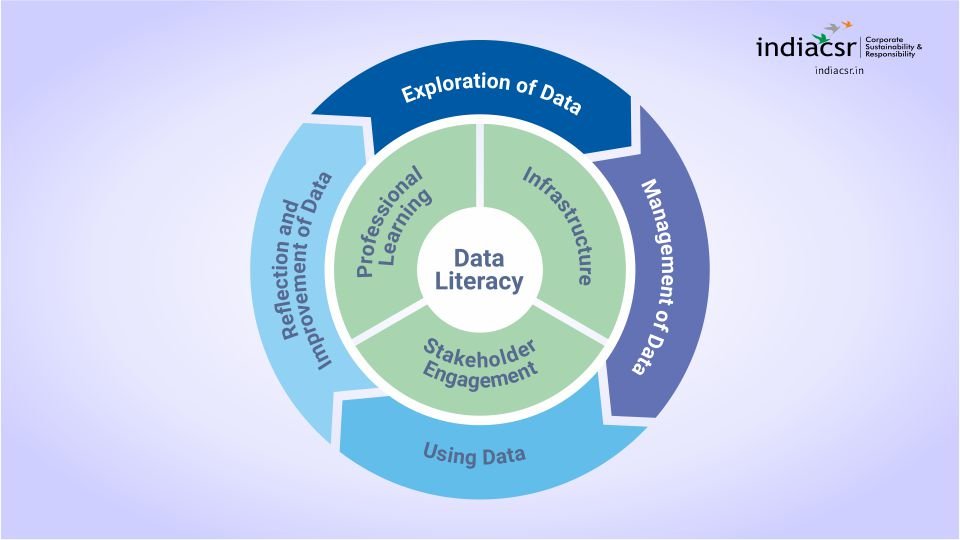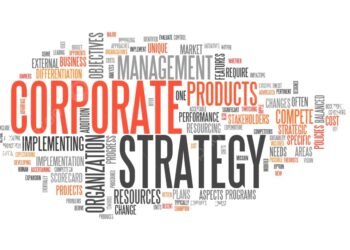Data literacy is an essential part of modern business, therefore any company that wants to remain competitive should invest in it.
Each firm that wants to stay competitive in the data-driven world of today must invest in developing its data literacy capabilities. Those who have a strong grasp of data literacy are better equipped to assess complex information, make educated decisions, and effectively communicate their results. These base lays the groundwork for knowledge relevant to a given function and aids in the development of organisational capacity. Organizations may better understand their data and use it to spur growth and success by investing in the development of data literacy skills. Furthermore, a data-literate workforce is prepared to maximise the abundance of information at their disposal and transform it into useful insights. Each corporation that wants to stay competitive should invest in data literacy because it is a crucial component of contemporary business.
4 Important Components for Data Literacy
To enhance data-based decision making, comprehensive data literacy combines four key components.
These components consist of:
- Exploration of Data
- Management of Data
- Using data
- Reflection and Improvement of Data
Let us describe each one in detailed manner.

Exploration of Data
Consider the purpose or “why” of the data
Exploration is vital for determining questions to ask. Precisely defining objectives and goals leads to more efficient and effective data utilization. Collaborating with stakeholders to reach consensus on information needs is crucial for successful data literacy outcomes. Understanding the purpose of various data sources, evaluating current data, and determining missing data all enhance other aspects of data literacy. The exploration process may also need revision as new insights and information are gained.
Data can be used to investigate.

Here are several examples.
- How efficiently are we using our resources (e.g., budget, staff, time, materials)?
- How effective are the core and intervention programs and practices?
- Which students, educators, or systems need additional support?
- What instructional changes are necessary to support groups or individual?
- To what extent are programs and practices being implemented with fidelity?
- What are areas of improvement?
- What is the impact?
Management of Data
Getting and storing the right data
Data Management involves identifying and collecting relevant data to address prioritized questions. It encompasses data source selection, collection, quality control, access, and storage. Choosing appropriate measures without excessive burden is a crucial first step. As multiple measures may be needed to answer a question, infrastructure is increasingly important. An efficient, sustainable, and integrated data system is necessary for easy data entry, access, and analysis. Access to high-quality data is crucial for accurate and valid interpretations.

Considerations for Data Management
Data management includes many components.
Consider the following:
- What are valid indicators of what you want to know?
- What data sources are already available?
- What is the burden (e.g., costs, time, feasibility) of collecting and submitting these data, including professional learning needs?
- Have you consulted any applicable data governance processes or staff?
- Do you have quality data (e.g., accurate, representative)?
- How will you store the data?
- Are the data easily accessible?
Using Data
Analyzing, interpreting, reporting, etc. to achieve your purpose
The Data Use aspect involves analyzing data, interpreting results, and making decisions to improve implementation to reach goals. Do you have too much data but lack information? For example, education systems face numerous data sources for various purposes. In a week, data can be used to detect gaps, improve continuously, make instructional decisions, allocate resources, evaluate programs, fulfill reporting requirements, or identify struggling students. Effective use of data is necessary for successful implementation of education programs aimed at enhancing student outcomes, at both the state and local levels.

Consideration for Data Use
- Which data sources need to be examined together to explore relationships (e.g., between implementation and outcomes)?
- What data analysis approaches will you use with which data sources?
- Do you have the capacity to conduct and interpret the analyses?
- What figures or reports will support analysis/interpretation?
- What information do your stakeholders need or want you to report?
- What are the best methods for sharing data with your stakeholders?
- What analyses, decisions, and/or reports will each stakeholder group need?
- Do stakeholders have the skills needed to interpret relevant findings and make informed decisions?
Also Read: CERT-In rules: Data privacy and security not mutually exclusive
Reflection and Improvement of Data
Examining how you can better or more efficiently achieve your purpose
Despite planning, there’s always room to enhance data literacy practices. Regularly adjusting and refining approaches is crucial, but taking time to reflect on the system is equally important. Are we efficiently engaging in data literacy elements? Are the measures still relevant? Have stakeholders’ needs changed? Improving data literacy leads to more efficient and effective use of data. Reflecting and improving reduces burden on educators and improves their ability to use data for various purposes, allowing responsiveness to change in staff, data sources, infrastructure, and stakeholder needs.
Must Read: Data Centres in India: How Can India Sustain Its Rapid Digital Growth?
The need for reflection and improvement
- Have you been effective in promoting data literacy among all of your major stakeholder groups?
- What areas do we still need to work on?
- How can we lessen the load on stakeholders across all components?
- Did you address all of my inquiries? Do you still have the right inquiries?
- Are there any methods that are more efficient and effective for gathering precise data and utilising that data to provide answers to your questions?
- Are the methods used now sustainable?
Copy Right @ India CSR
Also Read: What does data literacy mean in India?
Also Read: Data science, its advancements and upcoming innovations in society























